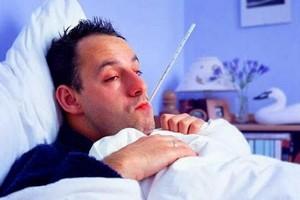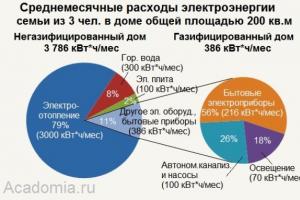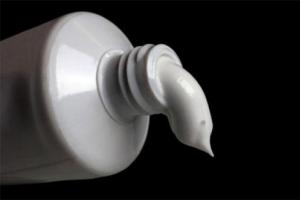information on regulatory and technical documents:
All manufactured products have Rostekhnadzor permissions for use, technical passports, manufacturing certificates, operating manuals and certificates of conformity. Additional parameters, such as: weight of the product, overall mounting dimensions, drawing, are sent upon request.
The valve is distinguished by a variety of designs, which depends on the functional purpose of the fittings. Basically, valves are divided into shut-off, control, safety and check valves. Less common are bypass, breathing, shut-off, shut-off, pressure reducing, mixing and distribution valves, and balancing valves. Let's look at some of them:
- A bypass valve is a device designed to maintain the pressure of a liquid or gaseous medium at a given level by bypassing it through a pipeline branch. Unlike a safety valve, a bypass valve ensures continuous removal of medium from the system. It is worth noting that this type of valve maintains a constant pressure at the inlet to the valve, that is, “before itself”;
- The breathing valve is designed to minimize the loss of petroleum products during the breathing of the tank while simultaneously preventing it from exceeding the specified pressure and vacuum values;
- The shut-off valve is a protective fitting necessary to prevent leakage or release of the working fluid in the event of a pipeline rupture. In addition, they significantly limit the flow of medium in the system above the established limit. Basically, shut-off valves are used on small-diameter pipelines when transporting media that leak into environment unacceptable;
- The shut-off valve is used to quickly shut off the pipeline in emergency situations or due to technological necessity. Such a valve is activated by a pneumatic or electric drive upon command from special sensors;
- The pressure reducing valve is an automatically operating throttle that provides constant outlet pressure. Can be used both to reduce pressure and to equalize variable pressure;
- A mixing valve is a type of control valve that is used to mix several flows of a medium into one in order to stabilize the properties of the working medium. The mixing valve body is characterized by the presence of two inlet and one outlet pipes. It is worth noting that during the mixing process only the flow ratio changes, while the flow rate always remains unchanged;
- The distribution valve is designed to direct flows of the working medium from two or more pipelines into one. Often, a control valve is used to control pneumatic and hydraulic actuators. Depending on the number of lines served, this valve is divided into three-way, four-way and multi-way valves;
- A balancing valve is a type of throttling valve designed to provide calculated flow distribution across elements of a pipeline network or stabilize circulation pressures or temperatures in them. Balancing valves are divided into manual and automatic.
Climatic design is the climatic operating conditions of the valves, which are determined in accordance with GOST 15150-69.
The type of flange connection in design and gasket material are selected depending on the operating conditions of the valve, pressure, operating temperature and corrosive properties of the environment.
List of random items:
Pipe fittings with drive control used in cases of frequent use pipeline fittings. It is also used when it is necessary to quickly influence the working body of the reinforcement in hazardous conditions and in emergency situations.
Along with this product you are also viewing:
Analogues of this product:
Pipeline or shut-off valves - technical devices, which are installed on pipelines and containers. Depending on the working environment and its parameters, pipeline fittings are divided into steam-water: for steam pipelines and water supply systems; energy fittings, oil, gas, sewerage, ventilation, cryogenic, vacuum, tank. Water supply systems are engineering structures that solve the problems of water supply to various consumers. There are internal and external plumbing systems. Energy fittings - used on steam and water pipelines of energy equipment and installations, power units, thermal power plants and nuclear power plants. Power fittings provide starts and stops of power equipment, load shedding and loading, regulation of flow and pressure of the working medium, protection against excess pressure and reverse flows of the medium. For these purposes, the following pipeline fittings are used: control, protective, safety and shut-off valves. Among energy valves, the most widely used are special shut-off valves with diameters from 6 to 65 mm: air valves, three-way valves, shut-off valves, gate valves with a small-sized gate. Air valves for DN 6 mm are used to release steam or air from pipelines or boilers during the heating period. To connect pressure gauges, three-way valves DN 10 mm are used. Among the most used shut-off valves on power equipment - shut-off valves DN from 10 to 65 mm, operating on steam and water. Gate valves are used as controlled shut-off devices to shut off the medium in main steam and water mains. For these purposes, valves with DN 100 - 450 mm are used.
Carbon steel is one of the most common material groups for the production of piping components. It is intended for products transporting neutral, slightly aggressive liquid and gaseous media at threshold temperatures from -40 to +425 degrees. Exact values permissible temperature of transported substances is calculated separately for each steel grade of this type.
The safety shut-off valve slam-shut valve is set to operate when the pressure of the conductive medium exceeds maximum or minimum set value. Setting range specified in the operating instructions for the product.Device required
included in the equipment set gas distribution points, to stop the gas supply to the consumer system in case of deviation working pressure from established meanings andprotection of regulators, pressure gauges, counterov and other operated gas appliances. Wherein restore gas supply only maintenance personnel can do so, having previously eliminated the cause that caused actuation of the valve and cessation of gas supplies to consumers.When the gas pressure on the burners of devices increases above the permissible limit, flame separation may occur what will entail gas flow into the room or working chambers and combustion spaces of installations , creating conditions under which there is a danger of explosion. To prevent such situations, a PZK valve is used, which cuts off the gas supply in the event of a critical increase in pressure. The design of the product also provides for operation in the event of an equally dangerous, significant decrease in operating pressure, since in this case a breakdown may occur. flame surge into the burner nozzles, which will lead to incomplete combustion of gas and it may end destruction I eat the burners themselves, if burning gas will continue within them and will not be stopped immediately.
To ensure the normal functioning of the product, it must be install directly in front of the regulators along the gas flow. In this case, the maximum response pressure which needs to be configured depends on the maximum permissible pressure for gas used networks. The minimum response pressure is determined by the pressure value below which there is a danger of interruption in operation of gas appliances and installations. Reasons An unacceptable increase or decrease in gas pressure after the regulator for dead-end networks can be caused by: malfunction of the pressure regulator (jamming of the plunger, formation of hydrate plugs in the seat and body, leakage of the valve); incorrect selection of the regulator according to its throughput, leading to an on-off mode of its operation at low gas flow rates and causing surges in output pressure and self-oscillations.The reason for an unacceptable increase or decrease in gas pressure after the regulator for ring and branched networks may be: a malfunction of one or more pressure regulators supplying these networks; incorrect hydraulic calculation of the network, due to which abrupt changes in gas consumption by large consumers lead to surges in output pressure.
A common reason for a sharp drop in pressure for any network may be a violation of the tightness of gas pipelines and fittings, and therefore a gas leak.
After switching on gas distribution point When working, check the tightness of the connections soap solution and any leaks found should be repaired immediately.
Safety shut-off valve must be configured to operate at several higher pressure, how relief valve. However, its value should not be higher than the maximum permissible operating gas pressure, which ensures normal operation of gas burner devices. Checking the product for accuracy of adjustment and operation is carried out as follows: it is necessary to gradually again increase or decrease pressure , watching At what pressure will the valve operate? If the pressure corresponds to the specified value, the valve setting is left unchanged. Otherwise, adjustments must be made. When checking the valve, gas must be supplied through the bypass line.The adjustment is carried out for a pressure that exceeds the final pressure (behind the regulator) at the pulse sampling point by 25 - 50%, but not higher than that allowed for the final pressure regulator.Safety shut-off valves PZK are designed to automatically stop the gas supply to the consumer when the controlled gas pressure increases or decreases relative to the set values. Working medium – natural gas according to GOST 5542-2014.
Issued according to TU 3712-021-12213528-2011

|
PKF EX-FORM LLC is the developer om and manufacturer of safety shut-off valves PZK with nominal diameters of 50, 100 and 200 mm. Safety shut-off valves PZK are designed for hermetically shutting off gas pipelines in the event of gas pressure exceeding controlled limits. The use of a membrane with a large active area and a minimum number of rubbing parts in the shut-off valve increases the accuracy and reliability of operation. Slam-shut valves automatically close when the controlled pressure exceeds the set upper and lower limits. The shut-off valves are opened manually. Arbitrary opening of the valves is excluded. The service life of the shut-off valve is at least 30 years, 3-year warranty, The overhaul interval is 7 years. |
Slam-shut valves automatically close when the controlled pressure exceeds the set upper and lower limits. Opening is done manually. Arbitrary opening of the valves is excluded.
The valves are available in two pressure versions - with low or high outlet pressure, in three nominal bore versions - DN 50, DN 100, DN 200 and in two versions according to the location of the cocking handle - right or left.
The right-hand design of the Valve is considered to be the design in which the cocking handle is located on the right, when looking at the inlet flange of the Valve along the gas flow.
The location of the cocking handle on the left is considered a left-hand version of the Valve.
Advantages of the shut-off valve:
- fundamentally new design device and the absence of external actuators exclude false positives valve;- the design of the device prevents displacement of the working valve relative to the seat;
- the minimum number of rubbing parts of the ball valve increases the accuracy and reliability of operation;
- the design of the locking mechanism has been successfully tested for several years in the shut-off valve of the RDK regulator.
Technical characteristics of shut-off valves
| Parameter name | PZK-50N | PZK-50V | PZK-100N | PZK-100V | PZK-200N | PZK-200V |
| Working environment |
Natural gas GOST 5542-2014 |
|||||
|
Nominal diameter, DN, mm |
50 | 50 | 100 | 100 | 200 | 200 |
|
Maximum inlet pressure, MPa |
1,2 | 1,2 | 1,2 | 1,2 | 0,6/1,2 | 0,6/1,2 |
|
Controlled pressure setting limits: - when pressure decreases, Kpa - with increasing pressure, Kpa |
0,4-3 |
3-30 |
0,4-3 |
3-30 |
|
|
| Operation accuracy, %, no more | 2 | 5 | 2 | 5 | 2 | 5 |
| Leakage class | "A" according to GOST 9544-2015 | |||||
| Construction length, mm | 230±1.5 | 230±1.5 | 350±2 | 350±2 | 600±2 | 600±2 |
|
dimensions, no more: - length, mm - width, mm - height, mm |
|
|
|
|
|
|
| Connection to gas pipeline |
Flange according to GOST 33259-2015 |
|||||
| Weight, kg, no more | 19 | 19 | 30 | 30 | 141 | 141 |
Advantages of shut-off valve
|
Production |
Exploitation |
|
Aluminum die-cast housing Body parts are manufactured in our own foundry from cast aluminum grades. |
False positives excluded The fundamentally new design of the device and the absence of external actuators eliminate false valve activations |
|
Membrane fabric EFFBE French membrane fabric from EFFBE provides high elasticity and retains its original properties in temperature conditions from -40°С to + 60°С. |
High degree of reliability The valve operation accuracy is within 1-2% of the specified settings for high pressure gas and 5% for low pressure. |
|
Ball shutter design A fundamentally new ball valve design with minimum quantity friction parts increases the accuracy and reliability of operation. |
Arbitrary opening of the valve is excluded The design of the valve prevents spontaneous opening in the event of operation. Restarting is only possible manually. |
|
Wurth sabesto lubricant The moving mechanism of the slam-shut valve uses wurth sabesto lubricant, which ensures the operation of the regulator at both high and low temperatures. |
Response time less than 1 second The valve seal time is less than 1 second when the pressure increases or decreases. The valve is cocked by simply turning the handle. |
|
Quality control Before shipping to the customer, each valve is tested for performance under conditions simulating real operating conditions. |
Eliminates displacement of the operating valve The design of the device eliminates displacement of the working valve relative to the seat, which allows maintaining the tightness of the class “A” valve for the entire service life. |
Slam-shut valve design

The valve has a valve-type flanged body, position 1. Inside the body there is a seat, which is closed by valve pos. 2 with a rubber seal. The valve hangs freely on the rod, pos. 3, which moves in the guides of the hub, pos. 4, and the separator, pos. 5, installed in the head, pos. 6.
The rod is also a bypass valve that serves to equalize the pressure before and after the valve before opening it.
The valve is opened by the handle pos. 7, put on the axis pos. 8 with the fork pos. 9 mounted on it.
The valve is closed by spring pos. 10.
The internal cavity of the head forms a pressure-controlled submembrane cavity.
A movable membrane-type system, pos. 11, is attached between the head and the cover, pos. 12. In the central part of the movable system, a carriage, position 13, is mounted, which, with the help of balls, position 14, installed in the separator, locks the rod when it is cocked.
A controlled pressure adjustment mechanism is placed inside the lid. The pin pos. 15 with the stop pos. 16 rests against the carriage of the moving system. A washer, pos. 17, is placed on the stop, which rests on the protrusions of the lid cup, pos. 18. A small spring, pos. 20, is installed between the stop and the adjusting screw, pos. 19, which determines the setting to reduce the controlled pressure; the gain is adjusted by rotating the adjusting screw, pos. 19.
The lower end of the washer, pos. 17, rests on the spring, pos. 21, which determines the setting to increase the controlled pressure; the spring force is changed by rotating the adjusting cup, pos. 22. Controlled pressure is supplied under the membrane through the nipple.
Operating principle of the slam-shut valve

The valve is cocked by turning the handle, position 7, on the same axis with which the fork is attached. As a result of the axial movement of the rod, the bypass valve opens and the pressure in the cavities of the body is equalized. This makes it possible to open the main valve.
At a given output pressure, the membrane together with the carriage pos. 13 occupies a neutral position. The carriage collar holds the balls pos. 14 from radial movement. The rod collar pos. 3 rests against the balls, blocking the axial movement of the rod. Spring pos. 21 with its lower end rests through the washer against the protrusions of the lid cup and does not exert pressure on the membrane.
The stop pos. 16 is adjusted on the pin pos. 15 in such a way that when the membrane is in the neutral position it is in contact with the washer pos. 17, and the pin is in contact with the membrane carriage.
When the outlet pressure increases or decreases to the response setting values, the membrane moves (respectively up under the action of pressure or down under the action of the spring pos. 20) together with the carriage pos. 13. The balls move radially, releasing the rod. Under the influence of the spring pos. 10, the valve pos. 2 is pressed against the seat, blocking the gas flow.
Preparing the slam-shut valve for operation
The valve must not be installed in environments that are corrosive to cast iron, aluminum, steel, rubber or zinc coating. The valve is mounted on a horizontal section of the pipeline in front of the pressure regulator. The membrane must be in a horizontal position. The gas inlet must correspond to the arrow cast on the body.
The impulse tube must be attached to the nipple (welded) and, if possible, slope downward from the head and not have areas with the opposite direction of slope in which condensate can accumulate.
Connecting a tube to the lower quarter of a horizontal pipeline in which pressure is controlled is not permitted. The impulse is taken after the pressure regulator. Check the quality of installation by testing for tightness with operating pressure and applying a soap emulsion at the joints. Leaks are not allowed.
Procedure for setting and operating the slam-shut valve
Upon completion of installation and pressure testing of the valve, the operating parameters should be adjusted.
Safety devices are designed to prevent pressure from rising above a predetermined value and to prevent the movement of the medium in the direction opposite to the specified one. Check valves, shut-off valves, relief valves, and high-speed valves are used as safety valves.
Safety shut-off valves(PZK) are used to automatically stop the supply of gas to consumers in the event of a change in its pressure at a controlled point above specified limits. They are installed in the GRP (GRU), on gas connections, in front of the burners of gas-consuming units.
The response accuracy of the slam-shut valve should be ±5% of the specified controlled pressure values for the slam-shut valve installed in the gas distribution unit, and ±10% for the slam-shut valve in cabinet-mounted gas distribution units (GRU). Mainly for hydraulic fracturing (GRU) and large gas consuming units, safety shut-off valves PKV and PKN with nominal diameters of 50, 80, 100 and 200 mm are used. The PCV valve membrane uses a stiffer spring, which allows it to be used on high-pressure gas pipelines.
Safety shut-off valve type PKN (B) (Fig. 4.3.) consists of a cast iron body of 1 valve type, a membrane chamber, a superstructure head and a lever system. Inside the body there is a seat and a valve 9. The valve stem is connected to a lever 14, one end of which is hinged inside the body, and the other with a load is brought out. To open valve 9 using lever 14, the rod is first raised slightly and held in this position, this opens a hole in the valve and the pressure difference before and after it decreases. The lever with the load 14 is brought into engagement with the anchor lever 15, which is hinged on the body. The impact hammer 17 is also hinged and located above the arm of the anchor lever. Above the body, under the superstructure head, there is a membrane chamber into which gas is supplied from the working gas pipeline under the membrane. On the top of the membrane there is a rod with a socket into which the rocker arm 16 fits with one arm. The other arm of the rocker arm engages with the pin of the impact hammer.
Fig.4.3. Safety shut-off valve type PKN (B):
Safety relief valves.
Safety relief valves are activated when the operating pressure increases to +15%, by releasing gas into the atmosphere.
As one of the types of pipeline fittings safety valve(Fig. 4.4) is designed to automatically protect the technological system and pipelines from unacceptable increases in pressure in the working medium. There are spring and lever safety valves.
According to the method of releasing the working medium, they are divided into a safety valve, which operates without back pressure and discharges the working medium into the atmosphere, and a safety valve with back pressure, which discharges the working medium into the pipeline.
 Rice. 4.4. Safety shut-off valves PKN (PKV):
Rice. 4.4. Safety shut-off valves PKN (PKV):
1 – fitting, 2.4 – levers, 3, 10 – shifters, 5 – nut, 6 – plate, 7.8 – springs, 9 – drummer, 11 – rocker arm, 12 – membrane
Also, the spring safety valve can be equipped with a manual detonation lever to check its functionality or manually release the working medium.
The safety valve (relief valve) is designed to protect equipment from unacceptable excess pressure above the established one. Safety valves are used on tanks, boilers, containers, vessels and pipelines for automatic or manual release of pressure into the atmosphere or outlet pipeline. After the pressure decreases to the required limit, the safety valve stops discharging the medium. Safety valves designed for liquid and gaseous, chemical or petroleum working media. Tightness standards according to GOST 9789-75.
An increase or decrease in gas pressure after the pressure regulator beyond the specified limits can lead to emergency situation. If the gas pressure increases excessively, the flames of the burners may come off and an explosive mixture may appear in the working volume of the gas-using equipment, seal failure, gas leakage in the connections of gas pipelines and fittings, failure of instrumentation, etc. A significant decrease in gas pressure can lead to the penetration of the flame into the burner or the extinguishing of the flame, which, if the gas supply is not turned off, will cause the formation of an explosive gas-air mixture in the furnaces and flue ducts of the units and in the premises of gasified buildings.
The reasons for an unacceptable increase or decrease in gas pressure after the pressure regulator for dead-end networks are:
Malfunction of the pressure regulator (jamming of the plunger, formation of hydrate plugs in the seat and body, leakage of the valve, etc.);
incorrect selection of the pressure regulator according to its throughput, leading to an on-off mode of its operation at low gas flow rates and causing surges in output pressure and self-oscillations.
For ring and branched networks, the reasons for unacceptable pressure changes after the pressure regulator may be:
Malfunction of one or more pressure regulators supplying these networks;
incorrect hydraulic calculation of the network, due to which abrupt changes in gas consumption by large consumers lead to surges in output pressure.
A common reason for a sharp drop in pressure for any network may be a violation of the tightness of gas pipelines and fittings, and therefore a gas leak.
To prevent an unacceptable increase or decrease in pressure in the hydraulic fracturing unit (GRPSH), high-speed safety shut-off valves (SSV) and safety relief valves (PSV) are installed.
SCPs are designed to automatically stop gas supply to consumers in the event of an increase or decrease in pressure above specified limits; they are installed after pressure regulators. SPDs are triggered in “emergency situations”, so their spontaneous activation is unacceptable. Before manually turning on the shut-off valve, it is necessary to detect and eliminate malfunctions, and also make sure that the shut-off devices are closed in front of all gas-using devices and units. If, due to production conditions, an interruption in the gas supply is unacceptable, then instead of a shut-off valve, an alarm system should be provided to alert service personnel.
PSK are designed to discharge into the atmosphere a certain excess volume of gas from the gas pipeline after the pressure regulator in order to prevent pressure from increasing above a predetermined value; they are installed after the pressure regulator on the outlet pipeline.
If there is a flow meter (gas meter), the PSK must be installed after the meter. For GRPS, it is allowed to take the PSK outside the cabinet. After the controlled pressure is reduced to a predetermined value, the PSC must close hermetically.
Safety shut-off valves
The shut-off valve is a valve that is open in operational condition. Gas flow through it stops as soon as the pressure at the controlled point of the gas pipeline reaches the lower or upper limit of the SCP setting.
The following requirements apply to the PZK:
It must provide a hermetically sealed closure of the gas supply to the regulator in the event of an increase or decrease in pressure beyond the established limits. The upper limit of SCP operation should not exceed the maximum operating pressure after the regulator by more than 25%;
are calculated for the inlet operating pressure according to the series: 0.05; 0.3; 0.6; 1.2; 1.6 MPa with a response range for increasing pressure from 0.002 to 0.75 MPa, as well as a response range for decreasing pressure from 0.0003 to 0.03 MPa;
the design must prevent spontaneous opening of the shut-off valve without the intervention of maintenance personnel;
the tightness of the shut-off valve must correspond to class “A” according to GOST 9544-93;
the response accuracy should be ±5% of the specified values of the controlled pressure for the slam-shut valves installed in the hydraulic registry, and ±10% for the slam-shut valves in the gas registry and combined regulators;
response inertia should be no more than 40–60 s;
the free passage of the shut-off valve must be at least 80% of the nominal passage of the slam-shut valve pipes;
the shut-off element should not simultaneously be the executive element of the gas pressure regulator.
Sampling of the controlled pressure pulse of the slam-shut valve must be done near the sampling point of the pressure regulator pulse, i.e., at a distance from the pressure regulator of at least five diameters of the outlet gas pipeline. Connect the impulse line of the shut-off valve to the lower part horizontal section gas pipeline is unacceptable to prevent condensate from entering.
Pressure control valves installed in gas distribution stations and on-site hydraulic fracturing units are often used as actuators security automation that stop the gas supply when any of the monitored parameters deviate beyond the specified limits (including at the command of a gas alarm). In this case, the SCP is usually equipped with an electromagnetic device. Shut-off valves also include thermal shut-off valves that shut off pipelines if the temperature rises to 80–90° C.








